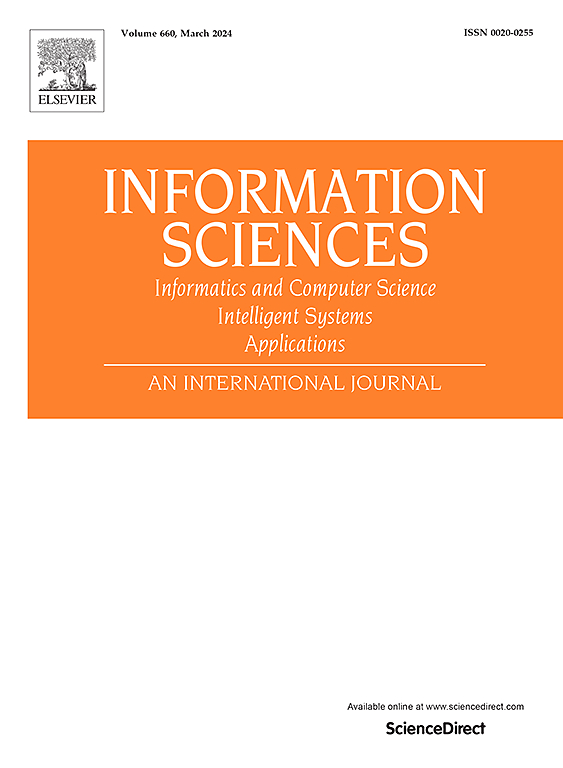Concept learning for algorithmic reasoning: Insights from SAT-solving GNNs
IF 6.8
1区 计算机科学
0 COMPUTER SCIENCE, INFORMATION SYSTEMS
引用次数: 0
Abstract
Explainable AI and model transparency methods primarily focus on classification tasks, identifying salient input features or abstract concepts that are directly tied to the data. In contrast, algorithmic problems such as SAT solving present a deeper challenge: here, meaningful concepts depend not only on the input but also on the model’s evolving internal state; hence, such settings remain underexplored. We study concept learning in an existing model named NeuroSAT, a Graph Neural Network (GNN) trained to predict satisfiability, and uncover internal algorithmic structures, most notably the notion of support, that align with classical SAT heuristics. We then construct a significantly simplified GNN trained via a teacher–student approach: instead of learning from SAT/UNSAT labels, the student is trained to mimic NeuroSAT’s latent representations—i.e., the concepts themselves—and achieves comparable performance using 91 % fewer parameters. For this simplified architecture, we provide a rigorous theoretical analysis that demonstrates, under certain assumptions on the input distribution and network weights, the emergence of the concept of support and its governing role in the network’s dynamics. This work bridges explainability and algorithmic reasoning by showing that classical SAT-solving strategies emerge naturally in GNNs—and can be used to simplify, compress, and formally analyze their internal dynamics.
算法推理的概念学习:来自sat求解gnn的见解
可解释的人工智能和模型透明度方法主要侧重于分类任务,识别与数据直接相关的显著输入特征或抽象概念。相比之下,像SAT求解这样的算法问题提出了更深层次的挑战:在这里,有意义的概念不仅依赖于输入,还依赖于模型不断演变的内部状态;因此,这些设置仍未得到充分探索。我们在一个名为NeuroSAT的现有模型中研究概念学习,这是一个经过训练的图神经网络(GNN),用于预测满意度,并揭示内部算法结构,最值得注意的是支持的概念,与经典的SAT启发式相一致。然后,我们构建了一个通过师生方法训练的显著简化的GNN:不是从SAT/UNSAT标签中学习,而是训练学生模仿NeuroSAT的潜在表示-即。并且使用少91%的参数实现了相当的性能。对于这个简化的架构,我们提供了一个严格的理论分析,证明在输入分布和网络权重的某些假设下,支持概念的出现及其在网络动态中的控制作用。这项工作通过显示经典的sat解决策略在gnn中自然出现,并可用于简化,压缩和形式化分析其内部动态,从而将可解释性和算法推理联系起来。
本文章由计算机程序翻译,如有差异,请以英文原文为准。
求助全文
约1分钟内获得全文
求助全文
来源期刊

Information Sciences
工程技术-计算机:信息系统
CiteScore
14.00
自引率
17.30%
发文量
1322
审稿时长
10.4 months
期刊介绍:
Informatics and Computer Science Intelligent Systems Applications is an esteemed international journal that focuses on publishing original and creative research findings in the field of information sciences. We also feature a limited number of timely tutorial and surveying contributions.
Our journal aims to cater to a diverse audience, including researchers, developers, managers, strategic planners, graduate students, and anyone interested in staying up-to-date with cutting-edge research in information science, knowledge engineering, and intelligent systems. While readers are expected to share a common interest in information science, they come from varying backgrounds such as engineering, mathematics, statistics, physics, computer science, cell biology, molecular biology, management science, cognitive science, neurobiology, behavioral sciences, and biochemistry.
 求助内容:
求助内容: 应助结果提醒方式:
应助结果提醒方式:


